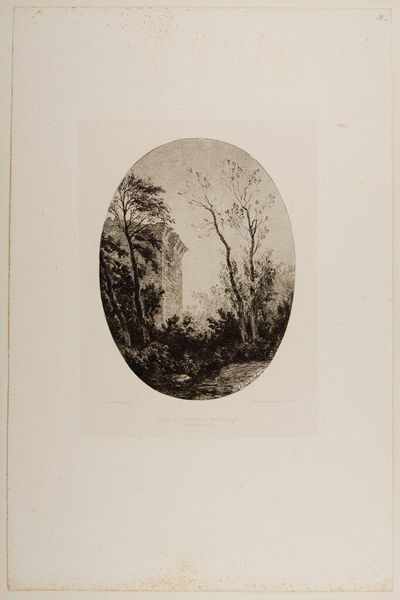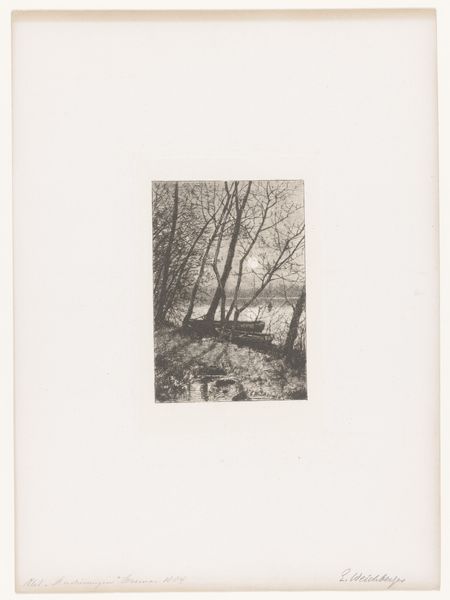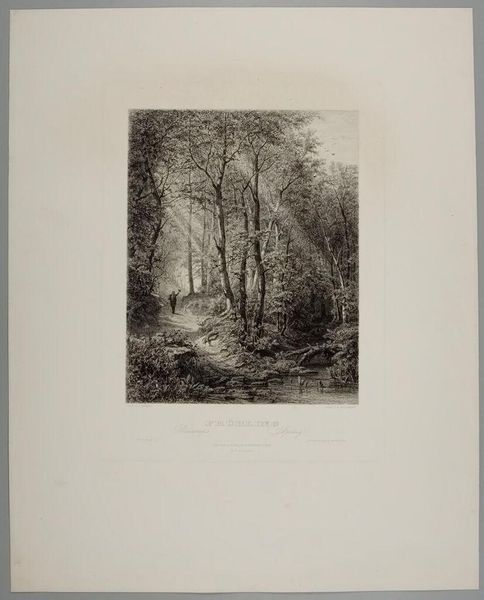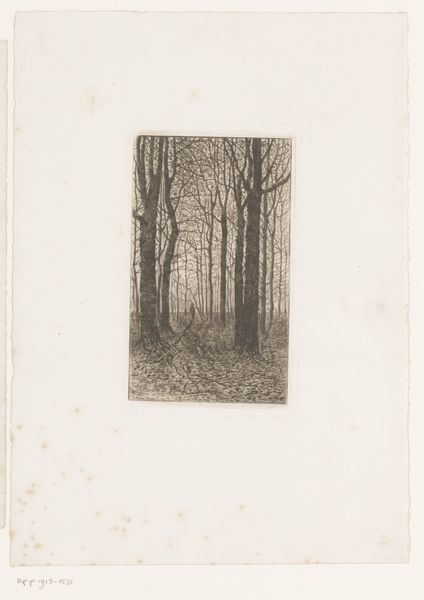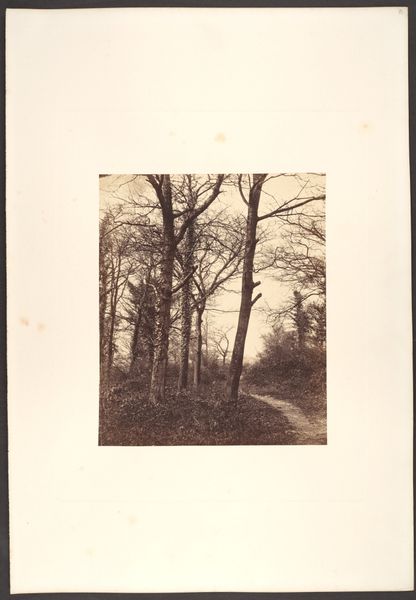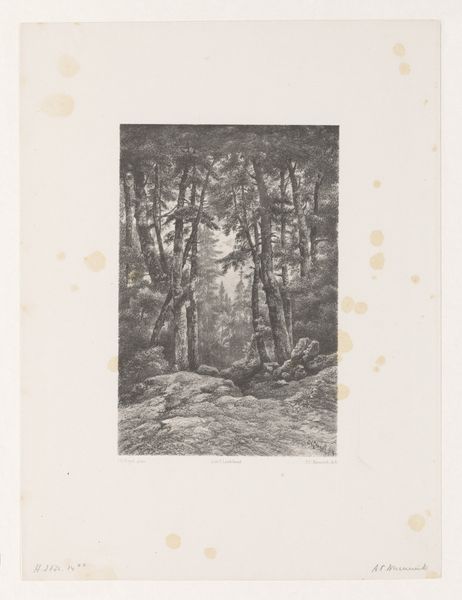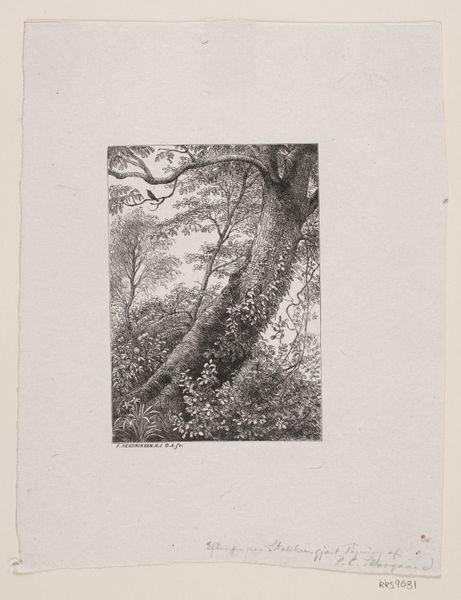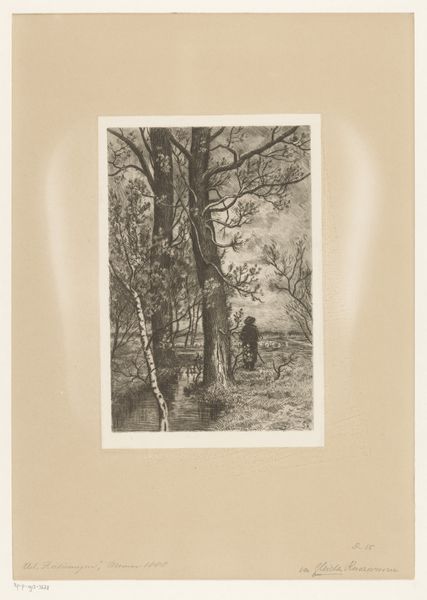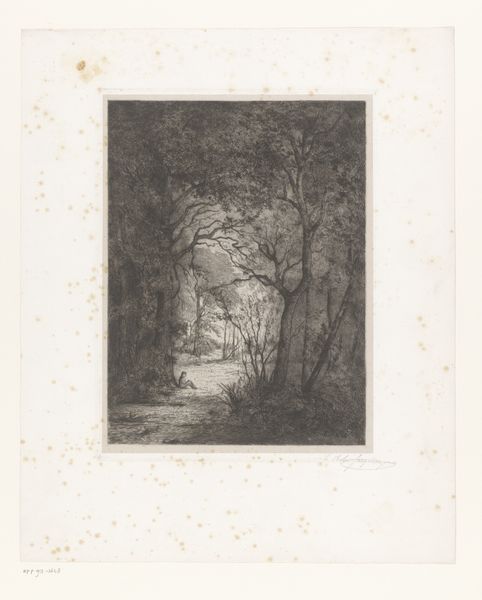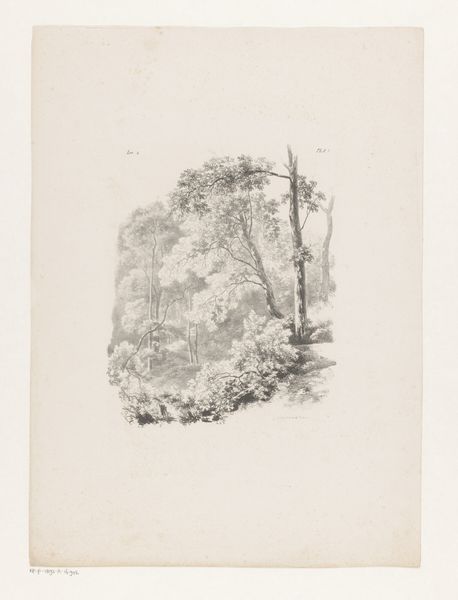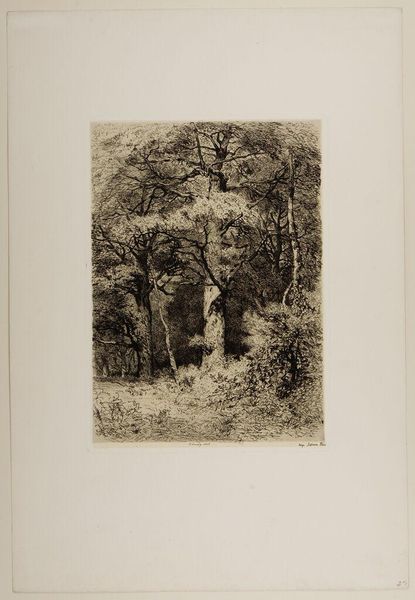
Dimensions: Image: 5.5 × 5.4 cm (2 3/16 × 2 1/8 in.) (a), circular Image: 5.6 × 5.5 cm (2 3/16 × 2 3/16 in.) (b), circular Image: 15 × 11.9 cm (5 7/8 × 4 11/16 in.) (c)
Copyright: Public Domain
Curator: Here we have "The Approach; In the Wood; By the Lake," a photographic triptych made between 1853 and 1856. The artist behind this gelatin-silver print is James Knight. What is your first take on this intriguing piece? Editor: Well, initially, I'm struck by how it captures a quiet stillness. The monochrome palette and soft focus evoke a sense of timelessness. It’s as if Knight has frozen a moment where nature reigns supreme. There’s also a sense of vulnerability that stems from the three separate windows into the forest, don't you think? Curator: Absolutely, I see the way the forest envelops. "The Approach" offers a view of how landscape photography from this period engages with Romanticism. This approach highlights a yearning for a connection to nature, and underscores a retreat from urbanization amidst the period of industrialization in Europe. What do the images suggest to you? Editor: I see symbols everywhere. Trees, of course, represent growth and connection, which links to the theme of escape, while the subtle presence of the deer speaks of the natural world’s purity. But this idea of an ideal "natural world" seems challenged. Look closely, we notice that Knight places this idealized version of nature inside of a framed image itself. In effect, Knight uses visual icons to build a message about the visual experience. It invites deeper meditation. Curator: That is a very perceptive reading, connecting individual freedom with both romantic introspection and collective social movements happening simultaneously. When we interpret Knight’s work as a whole, the three vignettes read as studies on subjectivity. The figure walking in the final frame especially invites discussion around personhood in that particular era. Editor: True, that solitary figure by the lake makes me think of something else, the story of Narcissus contemplating his own image. The themes of reflection are pretty prevalent in this photographic collage, wouldn't you say? Curator: Most certainly, Knight places both us, the viewer, and also the person strolling in this scene on a precipice of the real and reflected. We become complicit with an era of both great opportunity and uncertainty, all represented within his images. Editor: It’s fascinating how an image, particularly one of this period, continues to resonate today, prompting dialogues about our intertwined historical consciousness and symbolism. Curator: Yes, engaging with the historical contexts and philosophies framing an artist such as Knight invites broader understanding about shared futures, cultural production, and our social present.
Comments
No comments
Be the first to comment and join the conversation on the ultimate creative platform.
